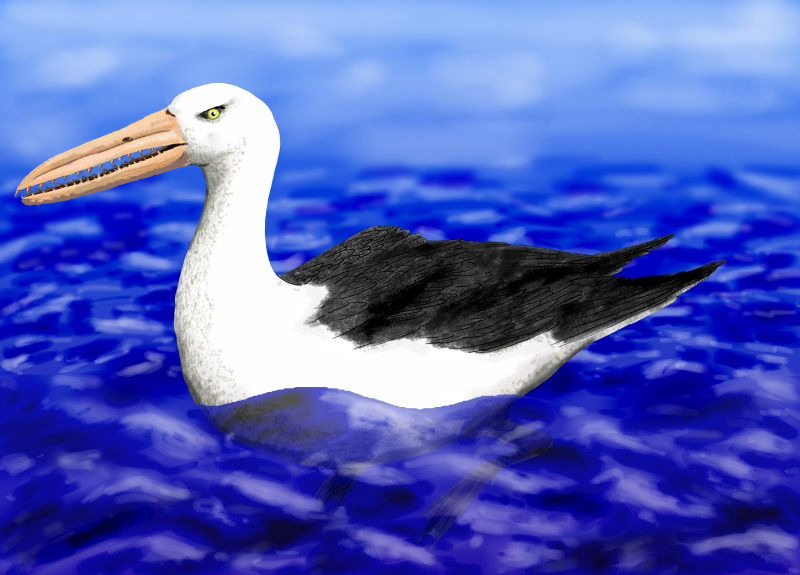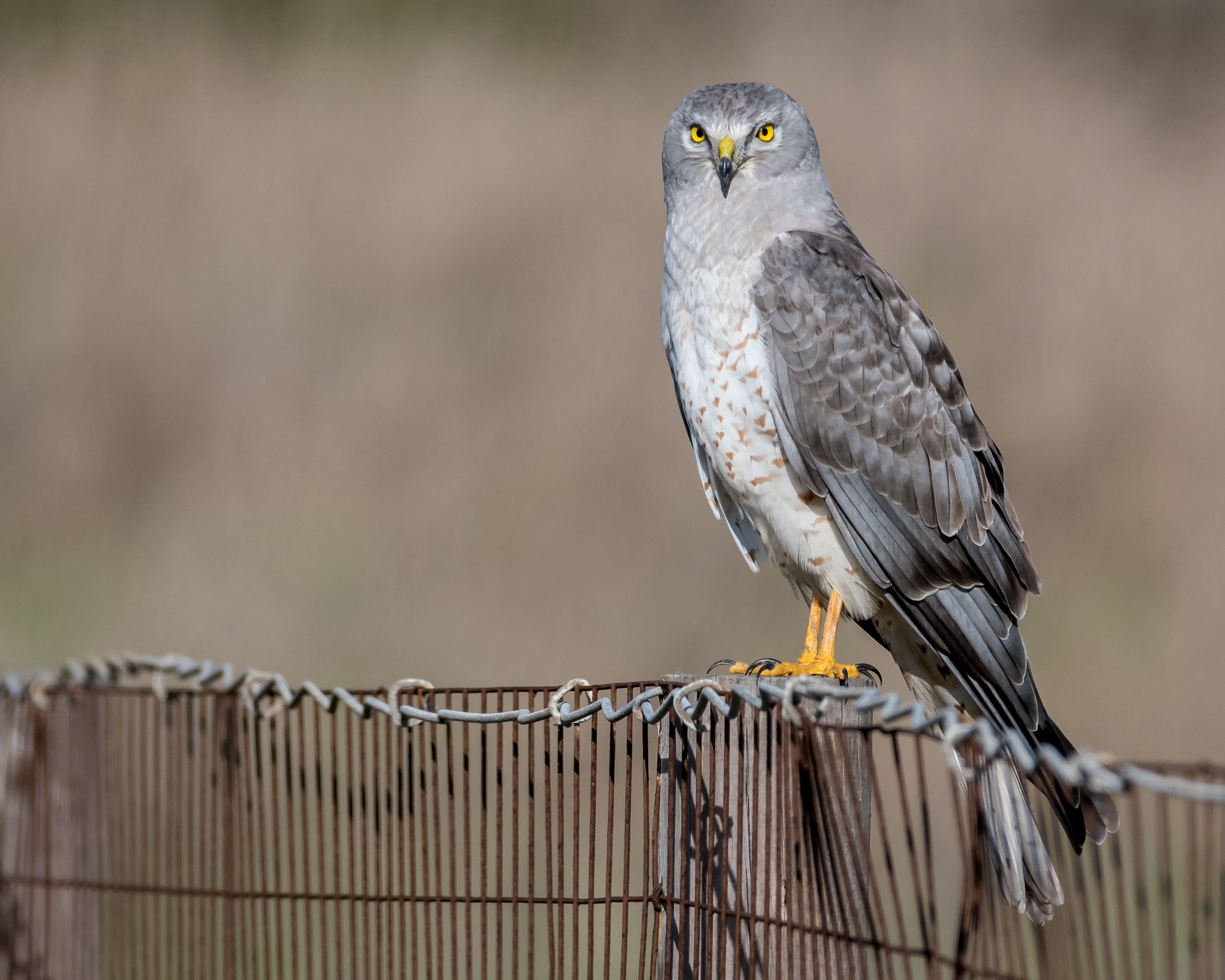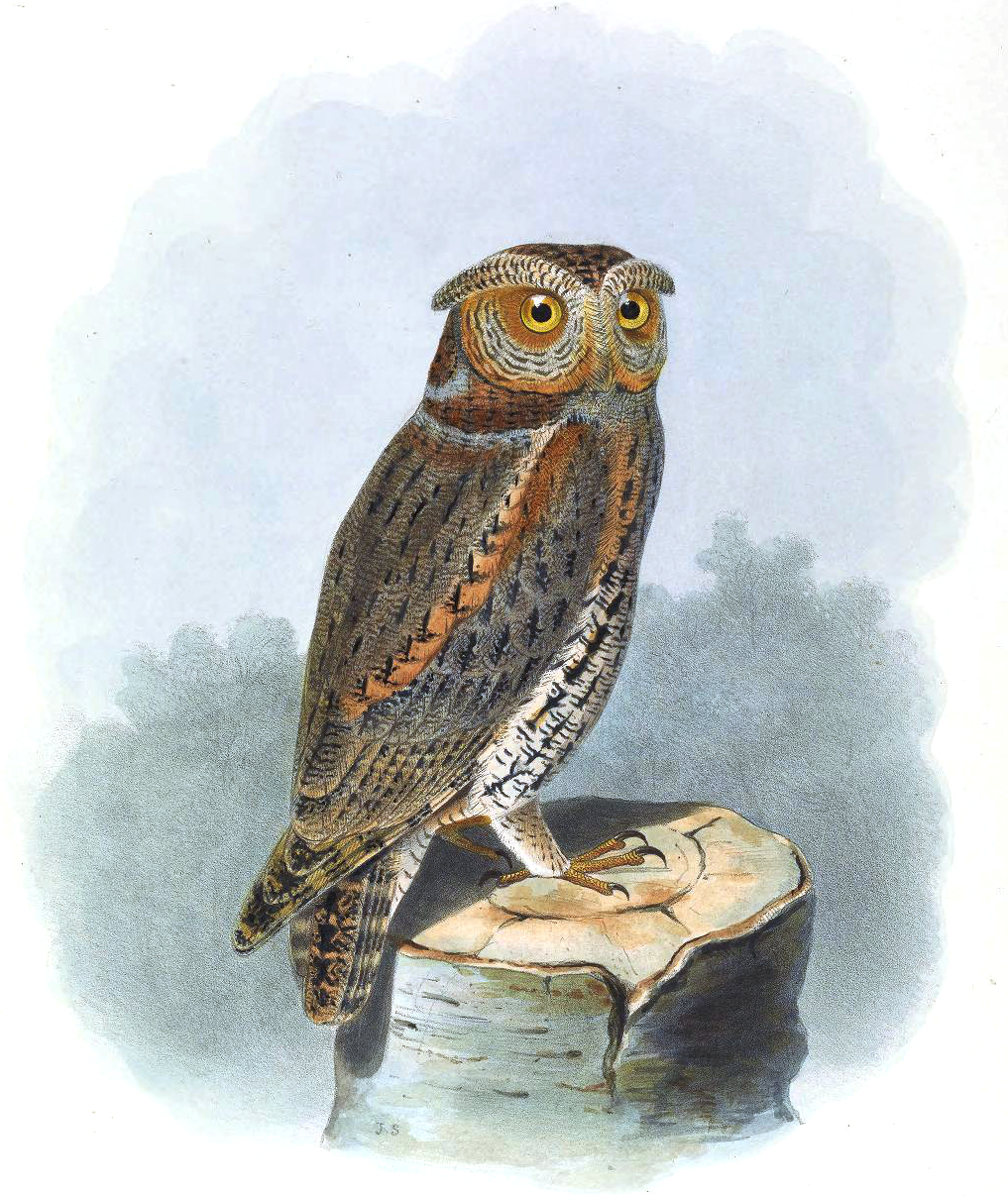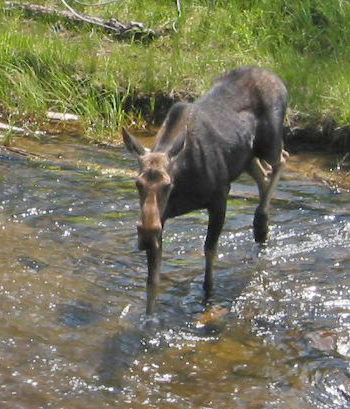|
Lac Du Bois Grasslands Protected Area
Lac du Bois Grasslands Protected Area is a protected area located north of Kamloops in British Columbia, Canada. The protected area was established by BC Parks on 30 April 1996 to protect a unique mixed forest-grassland ecosystem overlooking the North and South forks of the Thompson River. Geography Lac du Bois Grasslands is set within the southern foothills of the Bonaparte Plateau, which itself is part of the much larger Interior Plateau that bisects the province. These foothills vary in topography from gently rolling hills interspersed with small lakes and ponds to the prominent rocky cliffs overlooking Kamloops Lake. The soils of this region are predominantly alkaline. Ecology Flora The protected area is dominated by fields of junegrass and bluebunch wheatgrass broken-up by small groves of Ponderosa pine and Douglas fir. These grasslands gradually transition into a forest-dominated ecosystem at higher elevations. The southern benches, which are located in the southeaster ... [...More Info...] [...Related Items...] OR: [Wikipedia] [Google] [Baidu] |
Thompson-Nicola Regional District
The Thompson–Nicola Regional District is a regional district in the Canadian province of British Columbia. The Canada 2021 Census population was 143,680 and the area covers 44,449.49 square kilometres. The administrative offices are in the main population centre of Kamloops, which accounts for 78 percent of the regional district's population. The only other city is Merritt; other municipally-incorporated communities include the District Municipalities of Logan Lake, Barriere and Clearwater and the Villages of Chase, Ashcroft, Cache Creek, Clinton and Lytton, and also the Mountain Resort Municipality of Sun Peaks. The region is named indirectly for the Thompson River by way of the traditional regional names of "the Thompson Country" and "the Nicola Country"; the Nicola Country was named for Chief Nicola and was originally "Nicola's Country", where he held sway; he is also the namesake of that river. The regional district government operates over 125 services includ ... [...More Info...] [...Related Items...] OR: [Wikipedia] [Google] [Baidu] |
Ponderosa Pine
''Pinus ponderosa'', commonly known as the ponderosa pine, bull pine, blackjack pine, western yellow-pine, or filipinus pine, is a very large pine tree species of variable habitat native to mountainous regions of western North America. It is the most widely distributed pine species in North America.Safford, H.D. 2013. Natural Range of Variation (NRV) for yellow pine and mixed conifer forests in the bioregional assessment area, including the Sierra Nevada, southern Cascades, and Modoc and Inyo National Forests. Unpublished report. USDA Forest Service, Pacific Southwest Region, Vallejo, CA/ref> ''Pinus ponderosa'' grows in various erect forms from British Columbia southward and eastward through 16 western U.S. states and has been introduced in temperate regions of Europe and in New Zealand. It was first documented in modern science in 1826 in eastern Washington near present-day Spokane (of which it is the official city tree). On that occasion, David Douglas misidentified it a ... [...More Info...] [...Related Items...] OR: [Wikipedia] [Google] [Baidu] |
Waterfowl
Anseriformes is an order of birds also known as waterfowl that comprises about 180 living species of birds in three families: Anhimidae (three species of screamers), Anseranatidae (the magpie goose), and Anatidae, the largest family, which includes over 170 species of waterfowl, among them the ducks, geese, and swans. Most modern species in the order are highly adapted for an aquatic existence at the water surface. With the exception of screamers, males have penises, a trait that has been lost in the Neoaves, the clade consisting of all other modern birds except the galliformes and paleognaths. Due to their aquatic nature, most species are web-footed. Evolution Anseriformes are one of only two types of modern bird to be confirmed present during the Mesozoic alongside the other dinosaurs, and in fact were among the very few birds to survive their extinction, along with their cousins, the Galliformes. These two groups only occupied two ecological niches during the Mesozoic, ... [...More Info...] [...Related Items...] OR: [Wikipedia] [Google] [Baidu] |
Sharp-tailed Grouse
The sharp-tailed grouse (''Tympanuchus phasianellus''), also known as the sharptail or fire grouse, is a medium-sized prairie grouse. One of three species in the genus ''Tympanuchus'', the sharp-tailed grouse is found throughout Alaska, much of Northern Canada, Northern and Western Canada, and parts of the Western United States, Western and Midwestern United States. The sharp-tailed grouse is the List of Canadian provincial and territorial symbols, provincial bird of the Canadian province of Saskatchewan. Taxonomy In 1750 the English naturalist George Edwards (naturalist), George Edwards included an illustration and a description of the sharp-tailed grouse in the third volume of his ''A Natural History of Uncommon Birds''. He used the English name "The Long-tailed Grous from Hudson's-Bay". Edwards based his hand-coloured etching on a preserved specimen that had been brought to London from Hudson Bay by James Isham. When in 1758 the Swedish naturalist Carl Linnaeus updated his ''Sy ... [...More Info...] [...Related Items...] OR: [Wikipedia] [Google] [Baidu] |
Harrier (bird)
A harrier is a member of the genus ''Circus'' in Accipitridae, a family (biology), family of birds of prey. Harriers characteristically hunt by flying low over open ground, feeding on small mammals, reptiles, or birds. The young of the species are sometimes referred to as ring-tail harriers. They are distinctive with long wings, a long narrow tail, the slow and low flight over grasslands and skull peculiarities. The harriers are thought to have diversified with the expansion of grasslands and the emergence of List of C4 plants, grasses about 6 to 8 million years ago during the Late Miocene and Pliocene. Taxonomy The genus ''Circus'' was introduced by the French naturalist Bernard Germain de Lacépède in 1799. The type species was subsequently designated as the western marsh harrier. Most harriers are placed in this genus. The word ''Circus'' comes from the Ancient Greek ''κρέξ'' (''kréx)'' referring to a long legged bird, and is possibly ultimately derived from an onomat ... [...More Info...] [...Related Items...] OR: [Wikipedia] [Google] [Baidu] |
Flammulated Owl
The flammulated owl (''Psiloscops flammeolus'') is a small migratory North American owl in the family Strigidae. It is the only species placed in the genus ''Psiloscops''. Taxonomy The flammulated owl was formally described in 1852 by the German naturalist Johann Jakob Kaup under the binomial name ''Scops flammeola ''. He specified the type location as Mexico. This species was formerly placed with the scops owls in the genus '' Otus'' but is now placed in its own genus ''Psiloscops'' that was introduced in 1899 by Elliott Coues. The name ''Psiloscops'' combines the Ancient Greek ''psilos'' meaning "naked" or "smooth" with the genus name ''Scops'', a synonym of '' Otus''. The specific epithet ''flammeolus'' is Latin meaning "flame-coloured", "with flame-like markings" or "flammulated". The species is monotypic: no subspecies are recognised. A molecular phylogenetic study of the owls published in 2019 found that the flammulated owl is a sister species to the Puerto Rican owl (' ... [...More Info...] [...Related Items...] OR: [Wikipedia] [Google] [Baidu] |
White-tailed Deer
The white-tailed deer (''Odocoileus virginianus''), also known Common name, commonly as the whitetail and the Virginia deer, is a medium-sized species of deer native to North America, North, Central America, Central and South America. It is the most widely-distributed mainland ungulate herbivore in the Americas; coupled with its natural predator, the Cougar, mountain lion (''Puma concolor''), it is one of the most widely-distributed terrestrial mammal species in the Americas and the world. Highly adaptable, the various subspecies of white-tailed deer inhabit many different ecosystems, from arid grasslands to the Amazon basin, Amazon and Orinoco Basin, Orinoco basins; from the Pantanal and the Llanos to the high-elevation terrain of the Andes. Globally, the white-tailed deer has been introduced (primarily for Trophy hunting, sport hunting) to New Zealand, the Greater Antilles of the Caribbean (Cuba, Jamaica, Hispaniola, and Puerto Rico), and some countries in Europe (mainly the Cz ... [...More Info...] [...Related Items...] OR: [Wikipedia] [Google] [Baidu] |
Mule Deer
The mule deer (''Odocoileus hemionus'') is a deer indigenous to western North America; it is named for its ears, which are large like those of the mule. Two subspecies of mule deer are grouped into the black-tailed deer. Unlike the related white-tailed deer (''Odocoileus virginianus''), which is found throughout most of North America east of the Rocky Mountains and in the valleys of the Rocky Mountains from Idaho and Wyoming northward, mule deer are found only on the western Great Plains, in the Rocky Mountains, in the southwest United States, and on the west coast of North America. Mule deer have also been introduced to Argentina and Kauai, Kauai, Hawaii. Taxonomy Mule deer can be divided into two main groups: the mule deer (''sensu stricto'') and the black-tailed deer. The first group includes all subspecies, except ''O. h. columbianus'' and ''Sitka deer, O. h. sitkensis'', which are in the black-tailed deer group. The two main groups have been treated as separate species, but ... [...More Info...] [...Related Items...] OR: [Wikipedia] [Google] [Baidu] |
Moose
The moose (: 'moose'; used in North America) or elk (: 'elk' or 'elks'; used in Eurasia) (''Alces alces'') is the world's tallest, largest and heaviest extant species of deer and the only species in the genus ''Alces''. It is also the tallest, and the second-largest, land animal in North America, falling short only to the American bison in body mass. Most adult male moose have broad, palmate ("open-hand shaped") antlers; other members of the deer family have pointed antlers with a dendritic ("twig-like") configuration. Moose inhabit the circumpolar boreal forests or temperate broadleaf and mixed forests of the Northern Hemisphere, thriving in cooler, temperate areas as well as subarctic climates. Hunting shaped the relationship between moose and humans, both in Eurasia and North America. Prior to the colonial era (around 1600–1700 CE), moose were one of many valuable sources of sustenance for certain tribal groups and First Nations. Hunting and habitat loss hav ... [...More Info...] [...Related Items...] OR: [Wikipedia] [Google] [Baidu] |
Bighorn Sheep
The bighorn sheep (''Ovis canadensis'') is a species of Ovis, sheep native to North America. It is named for its large Horn (anatomy), horns. A pair of horns may weigh up to ; the sheep typically weigh up to . Recent genetic testing indicates three distinct subspecies of ''Ovis canadensis'', one of which is endangered: Sierra Nevada bighorn sheep, ''O. c. sierrae''. Sheep originally crossed to North America over the Beringia, Bering Land Bridge from Siberia; the population in North America peaked in the millions, and the bighorn sheep entered into the mythology of Indigenous peoples of the Americas, Native Americans. By 1900, the population had crashed to several thousand due to diseases introduced through European livestock and overhunting. Taxonomy and genetics ''Ovis canadensis'' is one of two species of mountain Ovis, sheep in North America; the other species being ''O. dalli'', the Dall sheep. Wild sheep crossed the Bering land bridge from Siberia into Alaska during the Pl ... [...More Info...] [...Related Items...] OR: [Wikipedia] [Google] [Baidu] |
American Black Bear
The American black bear (''Ursus americanus''), or simply black bear, is a species of medium-sized bear which is Endemism, endemic to North America. It is the continent's smallest and most widely distributed bear species. It is an omnivore, with a diet varying greatly depending on season and location. It typically lives in largely forested areas; it will leave forests in search of food and is sometimes attracted to human communities due to the immediate availability of food. The International Union for Conservation of Nature (IUCN) lists the American black bear as a least-concern species because of its widespread distribution and a large population, estimated to be twice that of all other bear species combined. Along with the brown bear (''Ursus arctos''), it is one of the two modern bear species not considered by the IUCN to be globally threatened with extinction. Taxonomy and evolution The American black bear is not closely related to the brown bear or polar bear, though all ... [...More Info...] [...Related Items...] OR: [Wikipedia] [Google] [Baidu] |







